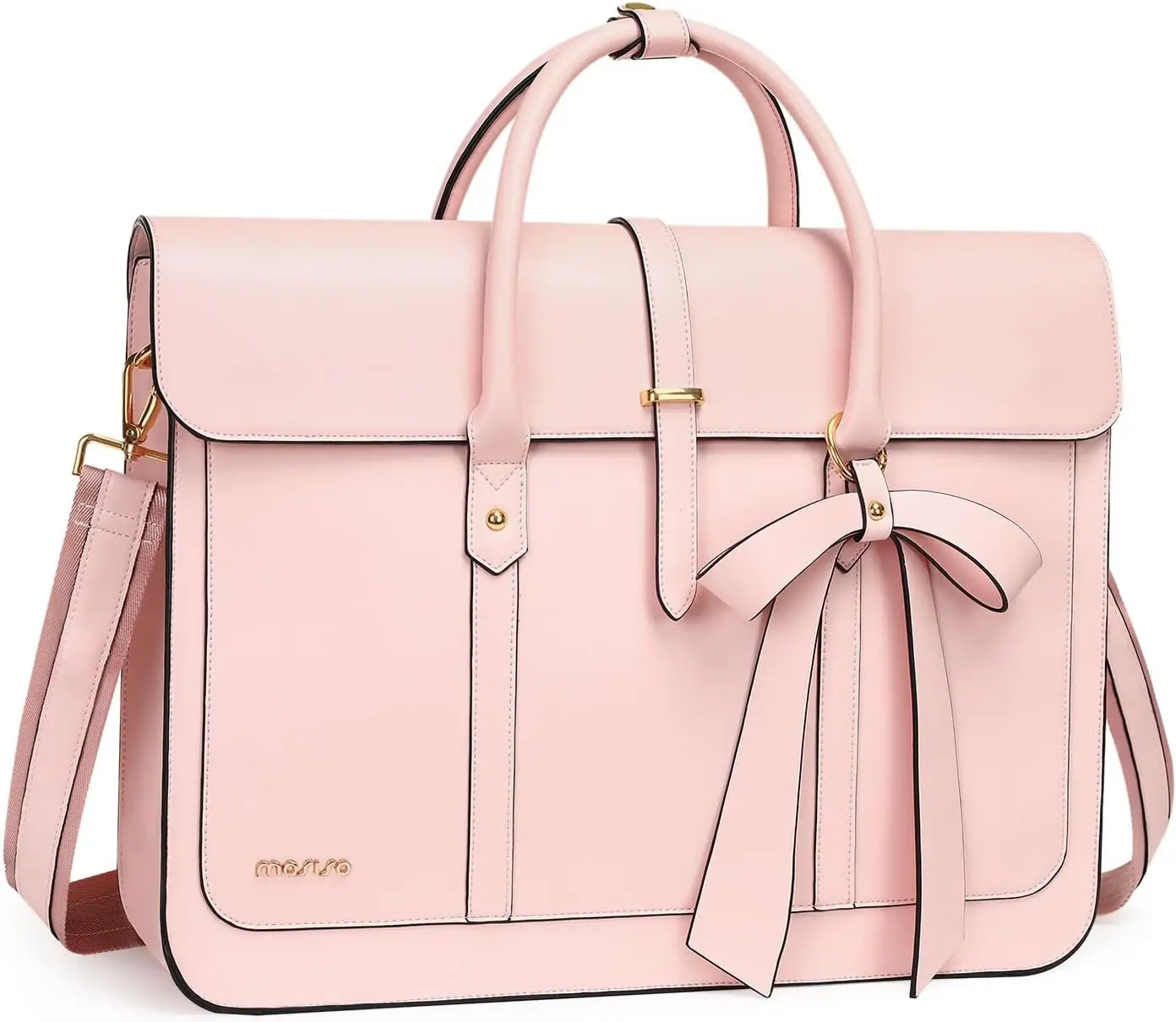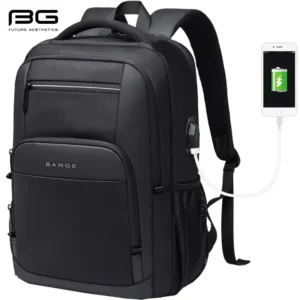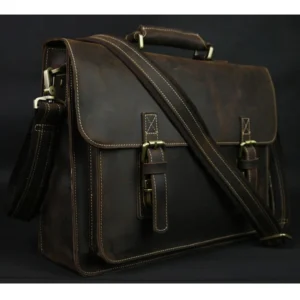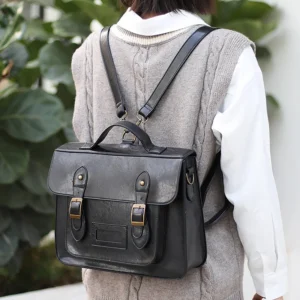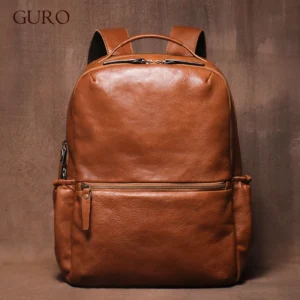The Smart Approach to Textbook Organization in Leather Backpacks
Carrying textbooks is a daily challenge for students everywhere. From high school hallways to university campuses, the weight of knowledge is often physically demanding – with the average student lugging around 15-20 pounds of books daily. This constant carrying not only tests your strength but also requires thoughtful organization to prevent discomfort and protect your valuable study materials.
A quality leather backpack offers distinct advantages for this academic journey. Unlike synthetic alternatives, leather provides superior durability against daily wear, natural protection from unexpected rain or spills, and a professional appearance that transitions seamlessly from classroom to internship. More importantly, a well-crafted leather backpack develops character over time while maintaining the structural integrity needed to support heavy textbooks year after year.
This guide delivers two essential benefits: practical organization techniques to maximize your backpack’s functionality and insights into the features that make certain leather backpacks ideal for academic life. Whether you’re carrying textbooks across campus or commuting to school, proper organization enhances both your backpack’s longevity and your academic efficiency. Fashionable leather backpacks for students don’t just look good – when properly organized, they become powerful tools for academic success.
Backpack Wisdom: A well-organized backpack isn’t just about convenience – it’s about preserving both your textbooks and your back health through thoughtful arrangement and weight distribution.
Finding the perfect leather backpack for campus is only the first step – mastering its organization is what transforms it from a simple carrier into an essential academic companion.
Essential Features of a Textbook-Friendly Leather Backpack
The foundation of effective textbook organization begins with selecting a leather backpack that has the right features. Not all backpacks are created equal when it comes to carrying heavy academic loads. The ideal textbook carrier combines adequate capacity, thoughtful compartmentalization, quality materials, and ergonomic design.
Leather laptop backpacks often provide the perfect combination of features for students, with dedicated protection for both books and electronic devices. When evaluating a backpack for textbook carrying, focus on these essential elements:
A. Understanding Capacity and Dimensions for Textbook Storage
Selecting the right backpack size is crucial for comfortable textbook carrying. A backpack that’s too small creates organizational headaches, while one that’s too large becomes unwieldy and encourages overpacking.
Capacity needs vary by academic level and course load. Consider these general guidelines when selecting a large leather backpack for your studies:
| Academic Level | Light Course Load | Heavy Course Load |
|---|---|---|
| High School | 15-17L | 17-20L |
| College/University | 20-25L | 25-30L |
| Graduate Studies | 25-30L | 30-35L |
When evaluating dimensions, remember that standard textbooks typically measure around 11”×8.5” or larger. Your backpack’s main compartment should comfortably accommodate these dimensions with room for other essentials. Look for backpacks with a depth of at least 6-7 inches to fit multiple textbooks while maintaining a profile that doesn’t extend too far from your back.
B. Critical Internal Organization Features for Textbooks
The internal layout of your leather backpack significantly impacts how efficiently you can organize textbooks. Key features to look for include:
- A padded laptop compartment that can double as storage for flat textbooks or folders
- Multiple main compartments that allow for separation of subjects or course materials
- Varied internal pockets for organizing smaller supplies like calculators, pens, and notebooks
- Secure zippered sections for valuable items and electronics
- Key clips and specialized storage areas for frequently accessed items
These organizational features allow you to create a system where everything has its designated place. Organizing your leather backpack effectively means less time searching for materials and more time focused on learning.
C. Durability Features for Protecting Valuable Textbooks
Quality leather naturally provides excellent protection for textbooks, but specific durability features enhance this protection:
- Full-grain or top-grain leather that resists wear and minor moisture exposure
- Reinforced stitching at stress points where textbook weight creates tension
- High-quality metal hardware (zippers, buckles) that won’t fail under heavy loads
- Reinforced bottom panel to prevent sagging when the backpack is set down
- Water-resistant properties to protect textbooks from light rain or spills
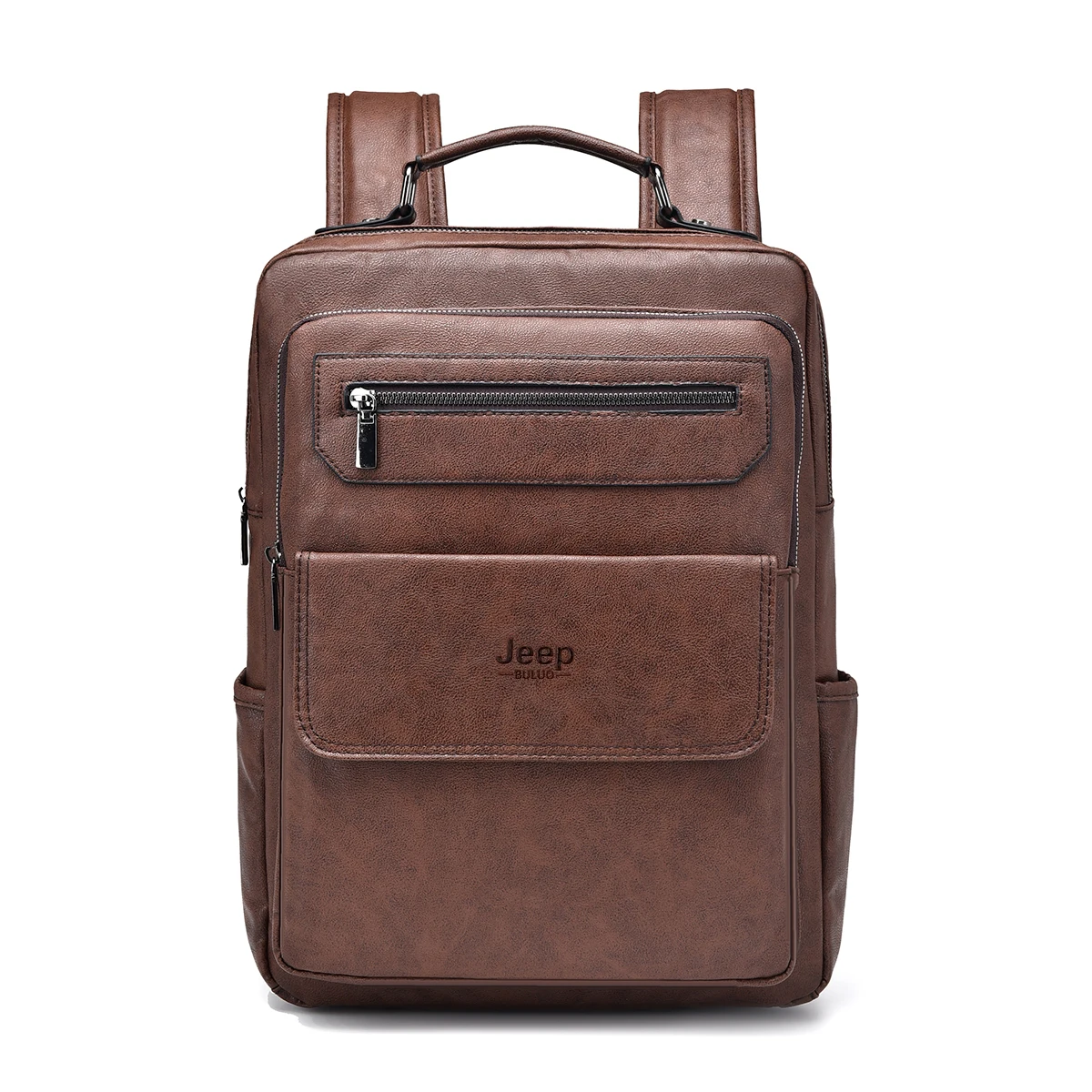
Full-grain leather backpacks offer superior durability for heavy textbook loads. The natural density and strength of full-grain leather make it resistant to punctures, tears, and abrasion – all common issues when carrying heavy books daily. Look for backpacks with reinforced corners and edges, as these areas experience the most wear when backpacks are placed on various surfaces throughout the day.
D. Ergonomic Design Elements for Heavy Textbook Loads
Carrying textbooks comfortably requires ergonomic design features that distribute weight properly:
- Padded, wide, adjustable shoulder straps that prevent digging and distribute weight evenly
- Sternum straps to stabilize heavy loads and reduce shoulder strain
- Back panel padding with ventilation channels to enhance comfort and reduce sweating
- Strategic handle placement for alternative carrying methods when needed
- Balanced weight distribution design that keeps books close to your back
These ergonomic elements make a significant difference in comfort, especially when carrying textbooks for extended periods. The best designs combine traditional leatherworking craftsmanship with modern ergonomic principles to create backpacks that both protect your books and your body.
Strategic Textbook Organization System
With the right leather backpack selected, implementing an effective organization system maximizes space, protects your books, and ensures comfortable carrying. This comprehensive approach addresses both daily preparation and long-term organization maintenance.
Students who master textbook organization find they not only protect their investments but also improve their academic efficiency by always having the right materials readily accessible. Student-friendly leather bags provide the framework, but a systematic organization approach brings true functionality.
A. Pre-Organization Assessment and Planning
Begin your organization process with a thoughtful assessment:
- Empty your backpack completely to start with a clean slate
- Evaluate which textbooks you truly need daily versus those that can stay at home
- Declutter by removing old handouts, unnecessary papers, and accumulated items
- Plan your organization based on your class schedule and study needs
- Group materials by subject to simplify daily packing
This assessment prevents carrying unnecessary weight and creates a clear vision for your organization system. Many students find conducting this audit weekly helps maintain an efficient system throughout the term.
B. The Physics of Textbook Placement: Weight Distribution Principles
Proper textbook placement within your backpack significantly impacts comfort and carrying efficiency. Follow these evidence-based principles:
- Position the heaviest textbooks vertically against the back panel, closest to your spine
- Place medium-weight books in the middle of the backpack
- Put lighter items toward the front of the backpack or in outer compartments
- Align book spines with the bottom of the backpack for stability
- Distribute weight evenly from left to right to maintain balance
These placement techniques create a stable center of gravity close to your body, reducing strain on your shoulders and back. Office backpack organization tips follow similar principles and can be applied to academic settings as well.
C. Maximizing Internal Compartments for Subject Organization
Use compartmentalization to create an intuitive organization system:
- Designate specific compartments for different subjects or course types
- Use the padded laptop sleeve for your computer, tablet, or flat textbooks that need protection
- Place frequently accessed subjects in easy-to-reach compartments
- Store related materials together (textbook with its corresponding notebook and handouts)
- Create zones within larger compartments using dividers or pouches

This systematic approach means you can quickly locate materials even in a fully packed backpack. It also prevents textbooks from sliding around and becoming damaged during transit.
D. External Pocket Utilization for Quick-Access Items
External pockets serve specific purposes in your organization system:
- Use front pockets for items needed between classes: pens, calculator, ID card
- Dedicate side pockets to water bottles or umbrellas, keeping them separate from books
- Store quick-reference materials like schedules or small notebooks in easy-access external pockets
- Balance items between pockets to maintain even weight distribution
External pockets are ideal for items you need quickly without opening your main compartment. Even small leather backpack organization can be optimized by strategically using these outer pockets.
E. Protective Measures for Textbook Preservation
Implement these protective strategies to extend the life of your textbooks:
- Use book covers or sleeves for frequently used textbooks to protect covers and corners
- Place books in waterproof sleeves if your commute involves exposure to weather
- Position books spine-down or spine-against-back to prevent spine damage
- Keep water bottles in separate compartments or use leak-proof containers
- Insert dividers between books with delicate pages or important notes
These simple protective measures prevent common damage like bent corners, cracked spines, and water exposure that can significantly reduce textbook value and usability.
Essential Organizational Accessories for Textbook Management
Complementary organizational tools enhance your textbook system and maximize the functionality of your leather work backpack. These accessories create micro-organization within your larger system.
A. Supply Management Tools for Academic Efficiency
These specialized tools keep small items organized and accessible:
- Slim pencil cases that fit easily in smaller compartments
- Cord organizers for headphones, chargers, and other electronic accessories
- Small pouches for subject-specific supplies like calculators or lab tools
- Color-coded organizers to match specific subjects or courses
These accessories prevent small items from becoming lost at the bottom of your backpack and make transitions between classes more efficient.
B. Document and Paper Management Solutions
Papers require special organization to prevent damage:
- Slim document folders that protect important papers without adding bulk
- Accordion files with labeled sections for different courses
- Lightweight portfolio folders for assignments and projects
- Plastic sheet protectors for frequently referenced documents
These solutions keep papers organized, prevent creasing, and make it easy to locate specific documents when needed. They work particularly well in leather backpacks with dedicated flat storage compartments.
14 Inch Leather Laptop Backpack, Brown Leather Backpack, Men's Leather Backpack, Vintage Leather Backpack
Price range: $177.28 through $199.12 Select options This product has multiple variants. The options may be chosen on the product pageDesigner Men's Backpack, Men's Leather Laptop Backpack, Men's Leather Work Backpack
Price range: $158.04 through $160.04 Select options This product has multiple variants. The options may be chosen on the product page15 Inch Leather Laptop Backpack, Leather Briefcase Backpack
$332.96 Select options This product has multiple variants. The options may be chosen on the product page17 Inch Leather Laptop Backpack, Men's Leather Travel Backpack, Men's Leather Work Backpack
Price range: $106.28 through $143.88 Select options This product has multiple variants. The options may be chosen on the product pageWomen's Leather Backpack, Women's Leather Work Backpack
Price range: $119.36 through $128.52 Select options This product has multiple variants. The options may be chosen on the product pageFull Grain Leather Backpack, Men's Leather Laptop Backpack, Men's Leather Work Backpack
$353.46 Select options This product has multiple variants. The options may be chosen on the product page
Advanced Weight Distribution Strategies for Heavy Textbook Loads
Proper weight distribution extends beyond simple backpack packing – it encompasses how you wear and adjust your backpack for maximum comfort with heavy textbook loads.
Leather school bags with laptop compartments are designed with weight distribution in mind, but proper adjustment is essential to utilize these features effectively.
A. Optimizing Comfort Through Proper Backpack Adjustment
Follow these adjustment steps for optimal comfort:
- Loosen all straps before putting on your backpack
- Position the backpack so it sits 1-2 inches above your waist
- Tighten shoulder straps so the backpack hugs your back firmly without pulling backward
- Fasten and adjust the sternum strap to around mid-chest level
- Ensure weight is evenly distributed between both shoulders
- Adjust load lifter straps (if available) to angle the backpack slightly toward your body
Proper adjustment prevents common discomfort like shoulder pain, neck strain, and lower back fatigue. Taking a moment to adjust your backpack whenever you significantly change its contents pays dividends in comfort throughout the day.
B. Regular Maintenance of Organization Systems
Maintain your organization system with these routine practices:
- Conduct a daily quick-check before leaving class or campus to remove unnecessary items
- Perform a weekly organization reset to restore your system to optimal function
- Complete a thorough reorganization at the beginning of each term or semester
- Adapt your organization as course requirements and materials change
Regular maintenance prevents the common problem of accumulated weight from forgotten items and ensures your system remains effective throughout the academic year.
Leather Backpack Care for Longevity with Textbooks
Quality leather backpacks can last for many years of textbook carrying, but proper care is essential to maintain their functionality and appearance, especially under the stress of heavy loads.
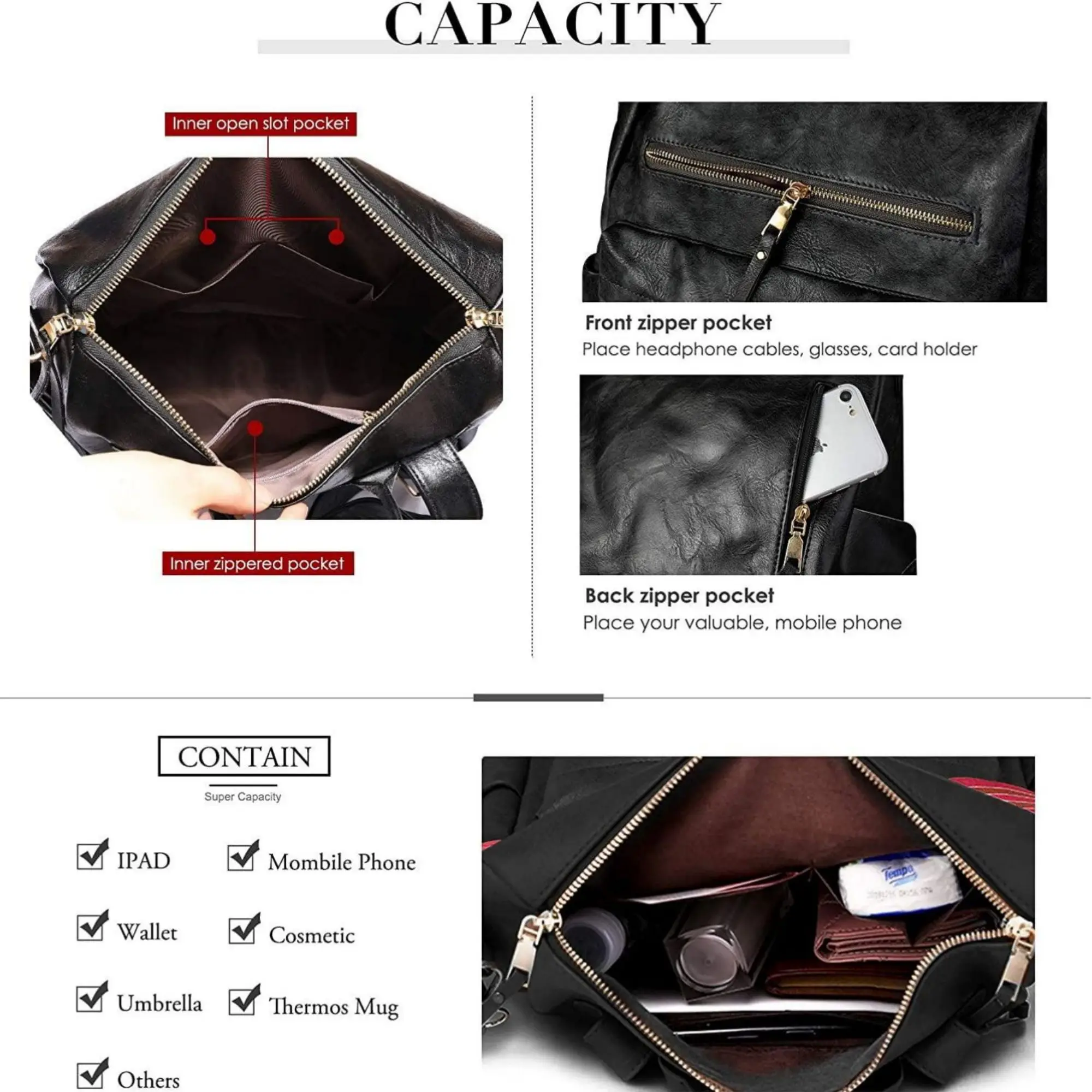
A. Essential Leather Care for Academic Environments
The academic environment presents unique challenges for leather care:
- Wipe down your leather backpack weekly with a clean, slightly damp cloth to remove dust and debris
- Apply leather conditioner quarterly to maintain suppleness and prevent drying
- Address moisture exposure immediately by gently blotting (not rubbing) and allowing natural drying
- Clean spills promptly, particularly coffee, soda, or food items common in academic settings
- Apply leather protectant before rainy seasons for additional weather resistance
Learning how to maintain your leather backpack properly ensures it remains beautiful and functional throughout your academic career.
B. Structural Maintenance for Heavy Textbook Loads
Textbooks place significant stress on backpack structures, requiring attention to:
- Regularly check stitching at stress points and address any loose threads promptly
- Clean and lubricate zippers and hardware monthly to prevent stiffness or failure
- Monitor the bottom panel for excessive wear and consider protective feet or a separate base protector
- Inspect shoulder straps for signs of stretching or separation from the main body
- Store the backpack properly when not in use, either hanging or standing upright with light support
These maintenance practices preserve structural integrity even under the consistent stress of heavy textbooks.
Can a Digital-Physical Hybrid Approach Reduce Textbook Load?
A strategic combination of digital and physical textbooks can significantly reduce the weight you carry daily while maintaining effective study habits.
Consider these factors when determining which books to digitize:
- Reference textbooks you need occasionally are ideal for digital formats
- Core textbooks that require deep reading and annotation may be better in physical form
- Subjects where you switch between multiple resources work well in digital format
- Courses with instructor-provided digital materials complement physical textbooks
When implementing a hybrid approach:
– Organize your backpack with a dedicated tablet/e-reader section
– Ensure you have appropriate charging solutions for long days
– Maintain digital organization systems that mirror your physical organization
– Consider which format best supports your learning style for each subject
Digital options reduce weight but require their own organization systems to remain effective study tools.
Are Rolling Leather Backpacks a Better Option for Heavy Textbook Loads?
Rolling leather backpacks present an alternative worth considering for students with particularly heavy loads or those with back concerns.
Pros:
– Significantly reduced weight-bearing on shoulders and back
– Typically offer larger capacity for multiple textbooks
– Often feature enhanced organization with more compartments
– Reduce physical strain during long campus commutes
Cons:
– Less convenient on stairs or uneven terrain
– Generally bulkier and less stylish than traditional backpacks
– Can be challenging in crowded spaces like buses or packed classrooms
– Often weigh more when empty due to wheel and handle mechanisms
The organization principles remain similar, but rolling backpacks typically offer more dedicated compartments and may require additional consideration for weight balance to prevent tipping.
How Do Different Academic Disciplines Affect Textbook Organization?
Different fields of study present unique organization challenges that require adaptations to your basic system:
Science/Engineering Students
– Need space for lab materials and safety equipment
– Often carry specialized calculators and tools
– May need waterproof compartments for field equipment
– Typically have larger, heavier textbooks
Arts/Design Students
– Require protection for larger format portfolios and sketchbooks
– Need organization for various art supplies and materials
– Often carry specialized tools that benefit from dedicated storage
– May need extra protection against art materials transferring onto textbooks
Business/Law Students
– Typically have multiple smaller volumes rather than few large textbooks
– Need superior document organization for cases and handouts
– Often require professional appearance for internships or presentations
– Benefit from quick-access compartments for frequently referenced materials
Adapt your base organization system to accommodate these specialized needs while maintaining the core principles of weight distribution and accessibility.
What’s the Most Sustainable Approach to Textbook Organization?
Sustainability in textbook organization extends beyond simply reducing paper usage:
- Quality leather backpacks like those from Summit Carry represent sustainable choices through longevity – a well-maintained leather backpack can last decades, unlike synthetic alternatives requiring frequent replacement
- Choose organization accessories made from sustainable materials like recycled plastics, organic cotton, or responsibly harvested paper products
- Implement systems that protect textbooks to extend their usable life
- Consider second-hand textbooks and proper care to enable resale after course completion
The most sustainable approach combines a quality, long-lasting leather backpack with thoughtful organization that protects both your books and the environment. By investing in quality and maintaining proper organization, you create a system that minimizes waste while maximizing efficiency.
This sustainable mindset aligns perfectly with the craftsmanship philosophy behind quality leather goods – choosing items made to last rather than to be quickly replaced. A well-organized, properly maintained leather backpack becomes not just a tool for academic success but also a statement of environmental responsibility.
